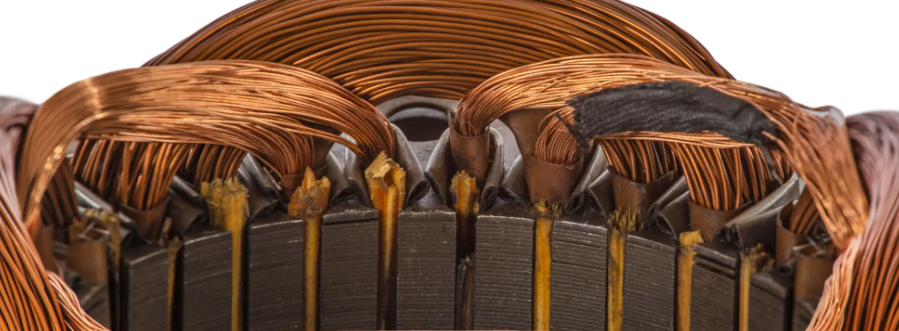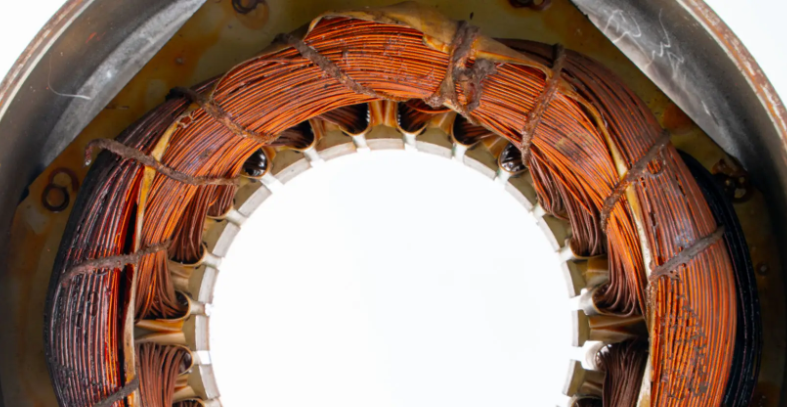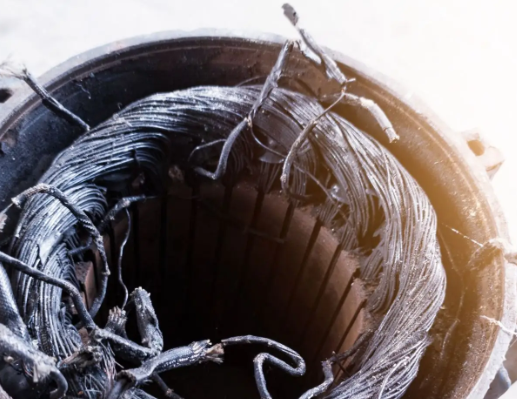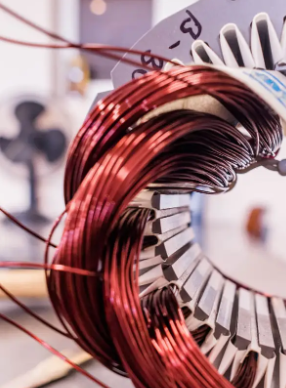The photos below show the typical winding of a 3-phase stator broken. When poor mechanical or electrical conditions expose it. You can use the pictures to identify what caused your stator to fail so that you don't have those awful days again.
Single-phase winding failure


The image shows damage to the insulation in one phase.
The problem came from the failures in the first and second pictures. These failures happened because one phase of the power supply to the motor opened. This often occurs due to an open contactor or a blown fuse. The third picture shows that the damage to the insulation is probably due to an unequal voltage across phases.
This could be the result of a bad connection between the motor terminal and the power source or a spring with a low resistance.
Check NIDE's FULLY AUTOMATIC THREE-PHASE MOTOR STATOR PRODUCTION LINE
All-phase winding failures

The image shows toast insulation at all phases of stator winding. The insulation damage in the second picture is much more severe.
The damage to the insulation on all phases caused the problem. The image above shows this. The usual cause is exceeding the motor's load ratings. However, under-voltage or voltages that exceed NEMA standards could cause this.
In the second picture, severe thermal damage often occurs when someone locks a rotor. This causes very high currents in the stator coil. Excessive starts and reversals are another reason why insulation in the three phases deteriorates so much.
Winding shorts

The picture in this section show shorts that are wound. All damage is indicative of insulation failure.
The problem that caused it: This type of insulation often fails because of dirt, wear, vibrations, or voltage spikes.
 中文版
中文版 English
English



